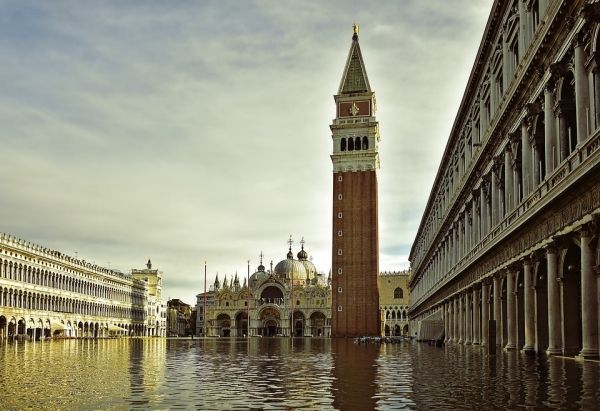A new assessment of flood risk in Venice indicates that the impact of higher emissions on relative sea level rise during this century will be critical in planning future defence infrastructure for Venice and other coastal cities, state the authors of a new special issue published in Natural Hazards and Earth System Sciences today.
The special issue, with contributions lead by researchers from Università del Salento, Institute of marine sciences of the National Research Council of Italy and University Ca’ Foscari of Venice, draws evidence from historical and contemporaneous data to explore why the flood risk in the UNESCO World Heritage city of Venice has increased in the recent past and is expected to further increase, even accelerate in the course of the 21st century.
One of the key factors when considering the serious threat of flooding in Venice and other coastal cities, is the importance of projected relative sea level rise. Relative sea level rise is the sea level’s change relative to the local solid Earth’s surface, and incorporates aspects of ground sinking as well as the mean sea level itself increasing.
Long-term future projections indicate a large uncertainty in the relative sea level of Venice of between 17 and 120 cm by 2100, which lead author Davide Zanchettin attributes to the challenges of projections based on the wide range of emission scenarios, and to insufficient understanding of relevant physical processes, both acting remotely and inside the Mediterranean and Adriatic Sea. “For a projection to be useful, it must be well constrained” Zanchettin says “There are important feedbacks in the climate system, for instance related to polar ice sheet dynamics, that we need to understand and better simulate to make more reliable projections.”
Read more at European Geosciences Union
Photo Credit: Peggychoucair via Pixabay


